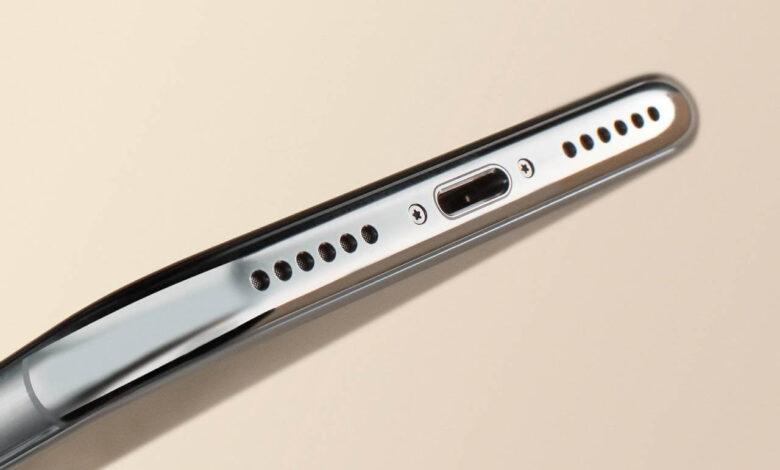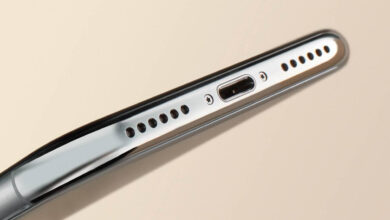What to Do If Water Gets into Phone Speaker: Quick Fixes to Try Now

Accidents happen, and one of the more common mishaps with smartphones is water entering the speaker. Whether it’s from a sudden spill, a drop into a puddle, or exposure during a downpour, water can seep into your phone’s speaker and potentially affect its performance. The immediate aftermath can be worrisome; you might notice muffled sound or no sound at all. It’s important to act swiftly to mitigate any possible damage.
Understanding the right steps to take when dealing with a waterlogged phone speaker can be the difference between a quick fix and a costly repair. Your phone’s speakers are delicate components, and while they’re built to handle minor intrusions to some extent, expelling any excess water should be done with care to avoid further damage.
The good news is that there are several tried-and-tested methods to help remove water from your phone’s speaker. These include using tools that create sound frequencies specifically designed to expel water, to gentle manual techniques that can aid in evaporation. Knowing how to correctly navigate this situation will help you preserve your phone’s functionality and keep your tunes playing clearly.
Immediate Actions
When your phone’s speaker comes into contact with water, taking swift and proper steps is critical to prevent any further damage to your device.
Turning Off the Phone
First things first, power off your phone immediately. This helps to mitigate the risk of electrical damage that can occur from water contact with the phone’s internal components.
Removing the Battery
If your phone has a removable battery, take it out at once. This reduces the potential for a short circuit, which can cause irreparable damage to your phone.
Ejecting the SIM Card and SD Card
Carefully eject the SIM card and SD card from their respective slots. Any residual water can damage these cards and result in data loss. Removing them also improves airflow inside the phone, which aids in the drying process.
Assessing the Damage
When you suspect that water has made its way into your phone speaker, it’s important to first check for any visible signs of moisture and then determine if there is any audio distortion. This initial assessment helps determine the severity of the water exposure.
Checking for Visible Water
Look closely at your phone’s speaker grille. If you can see droplets or any visible wetness, it’s a clear sign that water has entered the speaker area. Use a soft, absorbent cloth to gently dab the speaker grille without pushing the water further in.
- Do NOT use heat such as hairdryers, as it may cause more damage to the phone components.
- Avoid shaking the phone, which could spread water to other internal parts.
Listening for Distortion
After you’ve dried the exterior and there’s no more visible water, it’s time to test the speaker, but only do this if you’re confident that the interior is dry.
- Power on your phone.
- Play a familiar, clear audio track at a moderate volume.
Listen for any crackling or muffled sound which might indicate that water is still present or damage has occurred. If the audio is not crisp and clear as usual, there may still be moisture affecting the speaker’s function.
Drying Techniques
When water gets into your phone’s speaker, it’s crucial to act swiftly and choose the right drying method to prevent damage.
Using Silica Gel Packets
Silica gel packets are excellent at absorbing moisture. They are often found in new shoe boxes or electronics packaging. Seal your phone in a container with several silica gel packets for at least 48 hours to help draw out the moisture.
Rice Method
While not as effective as silica gel, uncooked rice can be a handy desiccant if you’re in a pinch. Submerge your phone in a bowl of rice, ensuring it’s completely covered. Leave your device in the rice for 24 to 48 hours.
Air Drying
Air drying is a gentle way to remove moisture. Place your phone in an area with good airflow, standing upright if possible, to allow the water to drain more easily from the speakers. Avoid using a hair dryer as the heat can damage your phone’s internals.
Use of a Vacuum
Using a vacuum with a small nozzle attachment can help pull water out of the speaker grills. Carefully apply suction around the speaker area for a few minutes. This method can be effective if done soon after the water exposure, as long as the vacuum is not too powerful.
Preventative Measures
To protect your phone’s speaker from water damage, it’s crucial to take proactive steps. These measures can help keep your device safe and sound.
Waterproof Cases
Invest in a waterproof case for your phone. This is the simplest way to prevent any water from getting into your phone’s speaker. These cases come in various styles and protection levels, so you can pick one that suits your lifestyle, whether you’re an outdoor enthusiast or just looking for everyday security.
- Features to Consider:
- IP Rating: Look for cases with a high IP (Ingress Protection) rating for the best waterproof protection.
- Accessibility: Ensure the case allows for easy access to your phone’s ports and buttons.
Regular Cleaning
Keep your phone clean from dust and dirt which, when mixed with moisture, can clog your speaker. Use a soft, dry cloth to wipe down your device regularly and consider using a gentle brush to remove any debris from the speaker grills.
- Cleaning Tips:
- Gentle Brushing: Gently brush the speaker grill to dislodge debris.
- Avoid Liquids: Do not use cleaning agents that can introduce moisture.
Avoiding Moisture Exposure
Be mindful of environments where your phone might be exposed to moisture. This includes avoiding placing your phone near liquids or in high-humidity areas like the bathroom during a shower.
- Practical Advice:
- Storing Safely: When not in use, store your phone in a dry, cool place.
- Handling Care: Be cautious with your phone around sinks, drinks, and other potential sources of water.
Professional Repair and Assistance
When water enters your phone speaker, it can be beneficial to seek professional help, particularly if initial home remedies fail to resolve the issue. Professional technicians have the expertise and tools to effectively address water damage.
Seeking Service Center Help
If your phone’s speaker performance does not improve after attempting to eject water, visiting a service center is a wise decision. Qualified technicians can diagnose the extent of the damage and conduct the necessary repairs. They use specialized equipment that can safely disassemble your phone, dry out internal components, and replace any parts that have been damaged due to water exposure.
Warranty and Insurance Considerations
Before bringing your phone in for repair, it is important to check your warranty and insurance policy. Some warranties might be void if the phone shows signs of water damage, so review the terms. If you have insurance, understanding the coverage can ease the process and potentially save you from out-of-pocket expenses. In either case, contacting your provider to understand what is covered can help you make an informed decision on how to proceed with fixing your phone.
Long-term Care
After addressing the immediate concern of getting water out of your phone speaker, it’s essential to maintain the health of your phone by observing its functionality over time and staying alert for any signs of long-lasting damage.
Observing Speaker Function
To ensure your phone speaker remains in good condition, periodically test the sound quality. You can do this by playing audio files or using apps designed to test speaker output. Make note of any distortions or reduced volume, as these could indicate residual moisture or damage.
- Compare Against Baseline Quality: Regularly compare the current sound quality to what you remember from before the incident.
- Check for Distortion or Muffled Sound: These are key indicators that your speaker may still be retaining moisture or has suffered damage.
Monitoring Phone Performance
Besides the speaker, water can influence your phone’s overall performance. Be vigilant for any unusual activity like:
- Battery Drain: A sudden or rapid decrease in your phone’s battery life.
- System Errors: Unexpected restarts or system crashes.
- Touchscreen Responsiveness: Changes in how your touchscreen responds to gestures.
Create a simple table or log of any issues and record how frequently they occur. If you notice persistent problems, consider consulting a professional technician to assess whether internal components were affected by the water exposure and require attention.
